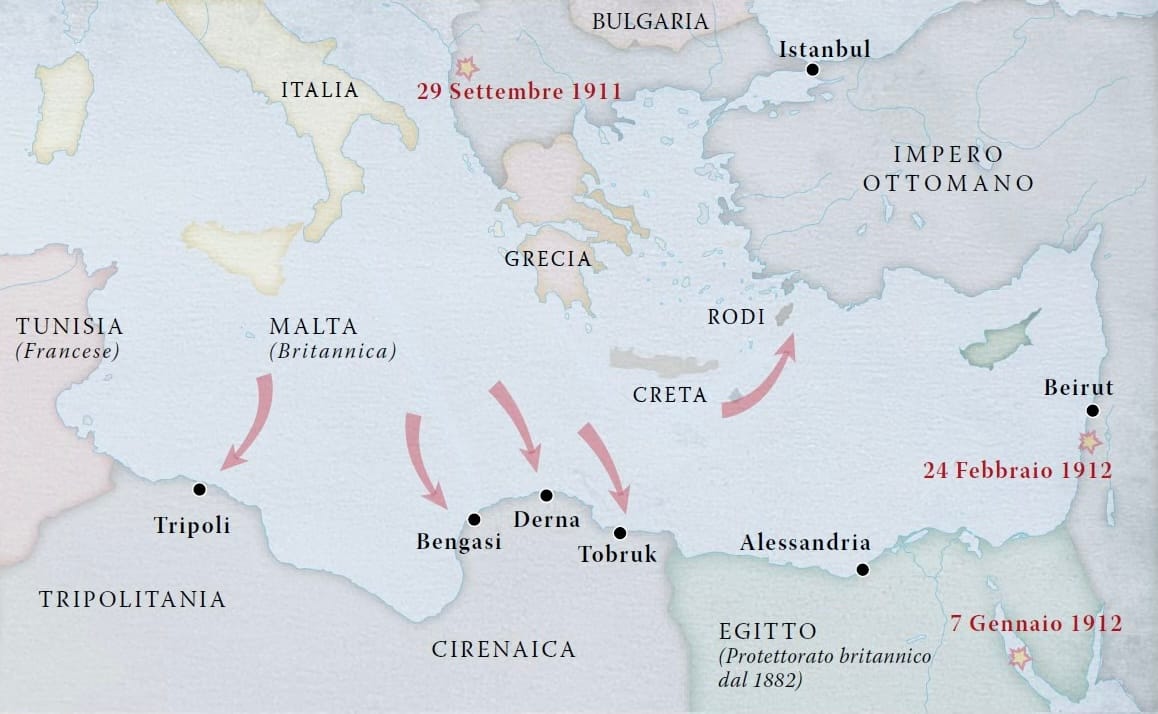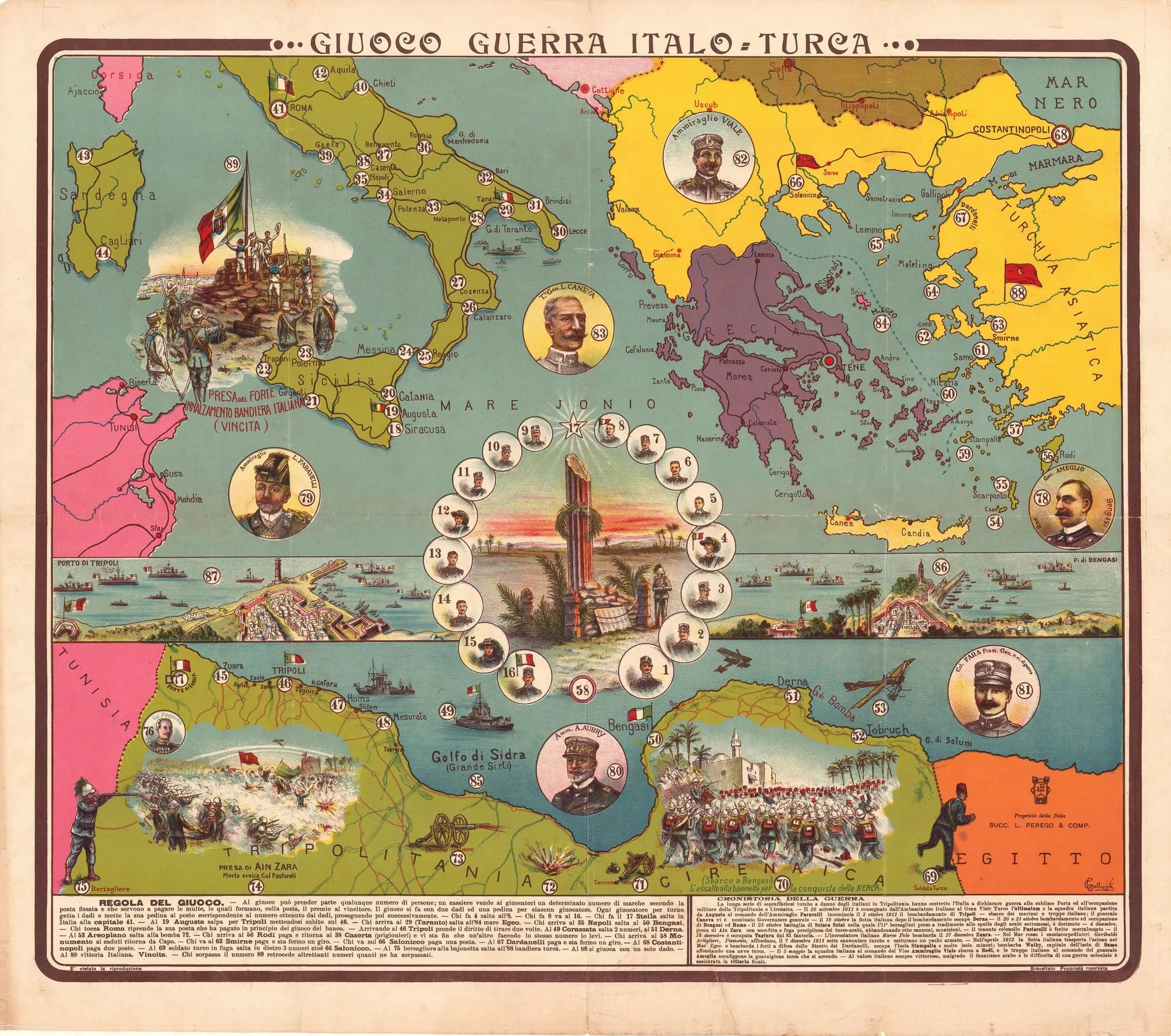“Such a State is Bound to Disappear”: The Middle East in the Forty Years’ War
Discussion of teaching the Middle East during the World Wars

In my introduction to this series, I suggested using the 1911 Italian invasion of present-day Libya as the starting point for the Forty Years’ War. Textbooks rarely mention this invasion. When they do, it’s often in the context of the European colonization of Africa. Italy sought to expand its small African colonial presence after the Ethiopians defeated them in 1896. This invasion triggered a regional war around the Eastern Mediterranean that involved battles in the Balkans, Rhodes, and Lebanon. The Ital0-Turkish War, or Libyan War, was truly the first regional conflict of the Forty Years’ War. Even before the fighting had ended, other Balkan states went to war with the Ottoman Empire because they saw the empire as fragile.

Italian and Ottoman publications in 1912 present the conflict as a regional war between two major powers, not as Italians invading Africa. The Italian “map” on the left shows where all the battles occurred. The Ottoman magazine cover shows one of their few victories in the war.


When we think about the world wars, the Ottoman Empire was one of the three Central Powers. Every map of the alliances that contributed to that war includes the Ottomans, but maps of the Second World War rarely show the Middle East. They tend to focus on the European and Pacific theaters, which gives students the impression that the Middle East didn’t participate in the war. Not only did fighting take place in the Middle East during the 1940s, Arabs, Persians, and Turks eagerly followed the political tensions of the 1930s. By exploring how Ottoman soldiers wrote about the First World War, Egyptian media covered the tensions of the 1930s, and the 1942-1943 famine in Iran, we can better understand how people in the Middle East experienced the Forty Years’ War.
Ottomans in the Great War
This content is for Paid Members
Unlock full access to Liberating Narratives and see the entire library of members-only content.
SubscribeAlready have an account? Log in



